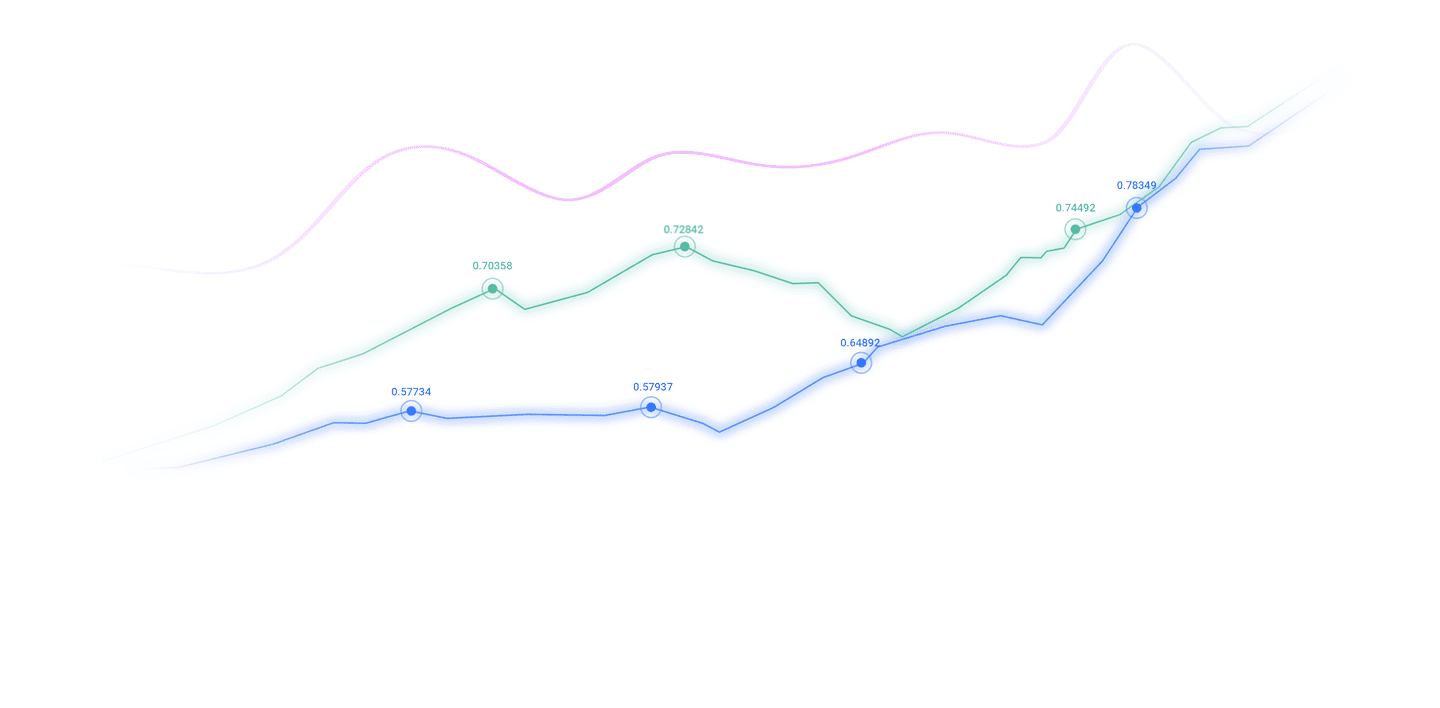Trusted by over 15 Million Traders
The Most Awarded Broker
for a Reason
CATEGORIES
News
- 【XM Market Analysis】--GBP/USD Forex Signal: Cable Roars Higher in Early Trading
- 【XM Group】--WTI Crude Oil Monthly Forecast: December 2024
- 【XM Decision Analysis】--GBP/USD Analysis: Nearing Oversold Levels
- 【XM Market Review】--USD/CAD Forecast: Rises Amid BoC Rate Cut Risks
- 【XM Market Review】--USD/TRY Forecast: USD/TRY Soars to 35.29 as Turkish Central
market news
The 30-year British bond exceeded 5.68%. Why did the pound stall instantly?
Wonderful introduction:
Walk out of the thorns, there is a bright road covered with flowers; when you reach the top of the mountain, you will see the cloudy mountain scenery like green clouds. In this world, a star falls and cannot dim the starry sky, a flower withers and cannot desolate the whole spring.
Hello everyone, today XM Foreign Exchange will bring you "[XM Foreign Exchange Market Review]: The 30-year British bond has exceeded 5.68%, why does the pound stall instantly?" Hope it will be helpful to you! The original content is as follows:
On Tuesday (September 2), the European pound fell sharply against the US dollar in the early trading, reaching a low of 1.3425 and returning to around 1.3430 in the short term; accompanied by long-term interest rates rising again - the 30-year UK Treasury yield rose to a range of 5.67%-5.68%, setting a new high since 1998; the 10-year yield was 4.78%. On the same day, Germany's 30-year government bond yield also reached a stage high of 3.3840%. The simultaneous rise in long-term interest rates, coupled with the autumn budget expectations, has caused the risk premium of pound assets to rise passively, and the exchange rate is under significant pressure.
Finance:
The core contradiction in recent markets is not growth itself, but the accelerated feedback loop of "fiscal-inflation-interest rate-asset price". First, the 30-year UK Treasury yield rose by another 3 basis points to 5.67% on Tuesday, and once reached 5.68% during the London trading period, setting a new 27-year high. Long-term lending costs rank among the top in the G7, reflecting the market's www.xmniubi.comprehensive concerns about inflation stickiness, debt stocks and incremental financing needs. Jim Reed, head of macro research at Deutsche Bank, bluntly stated that this is a "vicious cycle of slow development": doubts about debt sustainability push up yields, and higher yields in turn worsen fiscal dynamics and form negative reinforcement. Secondly, the yield on the 10-year British bond rose to 4.78%, and the yield curve continued to steeper under the long-term drive, indicating that the medium- and long-term risk premium is being repriced.
Fiscal level, Chancellor Reeves faces a dilemma before the fall budget: stabilize the fiscal path by cutting spending and increasing taxes, or choose a more moderate pace to avoid a second blow to the economy. Jefferies' MohitKumarIt is believed that "tax increase is inevitable, but further tax increase may be counterproductive", which echoes the market's consensus on "narrowing policy space." At the same time, expectations for defense and infrastructure expenditure in Europe have been revised up, driving the 30-year yield of German bonds to a high of 3.3840% since 2011. The spillover effect of rising European interest rates has also boosted British bonds.
In the foreign exchange market dimension, the pound fell 0.85% against the US dollar against the US dollar in the early trading, mainly due to the risk premium expansion caused by the high long-term interest rates. At the same time, "pre-budget uncertainty + the growth cost of high interest rates" lowered the neutral valuation of the pound. Analysis pointed out that as the 30-year British bond yield surged to 5.68%, the pound experienced a "sharp decline", which is consistent with the historical law of higher elasticity for foreign exchange to interest rate terminals and maturity premiums. Overall, fundamentals are switching from a single-line narrative of "how high interest rates can reduce inflation" to a multi-line narrative of "how fiscal credibility can lower the term premium", which has a greater and more direct marginal impact on exchange rates.
Technical aspect:
According to the 30-minute K-line chart, the Bollinger band shows a bandwidth change of "narrow first, expand later", with the middle track reported 1.3528, the upper track 1.3584, and the lower track 1.3472. The exchange rate hit the upper track at 1.3549 and failed to break through in large volume. Then a long solid downward K-line directly penetrated the middle track and broke through the lower track, reaching the lowest point to 1.3425, and now it returns to around 1.3430. MACD shows that DIFF is -0.0016, DEA is -0.0006, and histogram is -0.0019. The short side kinetic energy is in the expansion stage. DIFF is significantly below the DEA, and the "dead cross continuation" below the zero axis has not yet shown signs of passivation. The RSI(14) reading is only 14.0679, entering the extreme oversold range, indicating that there is a time window for technical rebound or "dead cat jump" in the short term, but in the context of Bollinger band diameter expansion, the slope of the mean regression may be slow.
In terms of price: 1.3425 is the primary static support in the current market. If it falls effectively, the psychological threshold of 1.3400 will enter the field of view; above, focus on 1.3472 (Bollinger's lower rail back-positioning) and 1.3528 (Bollinger's middle rail/dynamic resistance), which is the front high/top edge of the box of 1.3549. Only by standing firmly above 1.3528 and www.xmniubi.completing volume verification can short-term short-term short-term trend change from "acceleration segment" to "consolidation segment". Before this, the technical structure still pointed to "intermittent rebound in the downward trend" rather than a trendy V-shaped reversal.
Preview of market sentiment:
The "term premium repricing" on the interest rate side is dominating the foreign exchange risk factor, and the market is more sensitive to fiscal credibility and budget details than conventional macro data. The volatility of the equity market and the moderate widening of the credit spread jointly point to a "prudent and short" risk preference environment.
The core of emotions is not a single data surprise, but a "verifiability of policy paths": market tends to first observe whether the budget framework can reduce future supplyGive pressure and give a positive rating of the exchange rate. At the current stage, sentiment indicators and price behavior have shown "same direction strengthening" - a new high in long-term yield → a decline in pound → further calibrate the fiscal risk premium to form a spiral negative feedback. It is worth noting that the extreme oversold RSI suggests that short-term reflexivity may rise. Once the news side is slightly positive, the technical rebound triggered by short-term reversal may be relatively rapid, but the sustainability still depends on whether long-term interest rates can peak and fall as soon as possible.
The above content is all about "[XM Foreign Exchange Market Review]: The 30-year British bond has exceeded 5.68%, why does the pound stall instantly?" It was carefully www.xmniubi.compiled and edited by the editor of XM Foreign Exchange. I hope it will be helpful to your trading! Thanks for the support!
Every successful person has a beginning. Only by having the courage to start can you find the way to success. Read the next article now!
Disclaimers: XM Group only provides execution services and access permissions for online trading platforms, and allows individuals to view and/or use the website or the content provided on the website, but has no intention of making any changes or extensions, nor will it change or extend its services and access permissions. All access and usage permissions will be subject to the following terms and conditions: (i) Terms and conditions; (ii) Risk warning; And (iii) a complete disclaimer. Please note that all information provided on the website is for general informational purposes only. In addition, the content of all XM online trading platforms does not constitute, and cannot be used for any unauthorized financial market trading invitations and/or invitations. Financial market transactions pose significant risks to your investment capital.
All materials published on online trading platforms are only intended for educational/informational purposes and do not include or should be considered for financial, investment tax, or trading related consulting and advice, or transaction price records, or any financial product or non invitation related trading offers or invitations.
All content provided by XM and third-party suppliers on this website, including opinions, news, research, analysis, prices, other information, and third-party website links, remains unchanged and is provided as general market commentary rather than investment advice. All materials published on online trading platforms are only for educational/informational purposes and do not include or should be considered as applicable to financial, investment tax, or trading related advice and recommendations, or transaction price records, or any financial product or non invitation related financial offers or invitations. Please ensure that you have read and fully understood the information on XM's non independent investment research tips and risk warnings. For more details, please click here


































































































